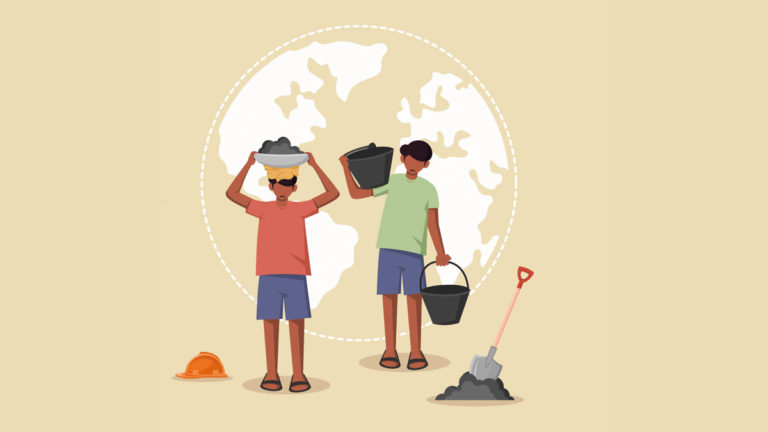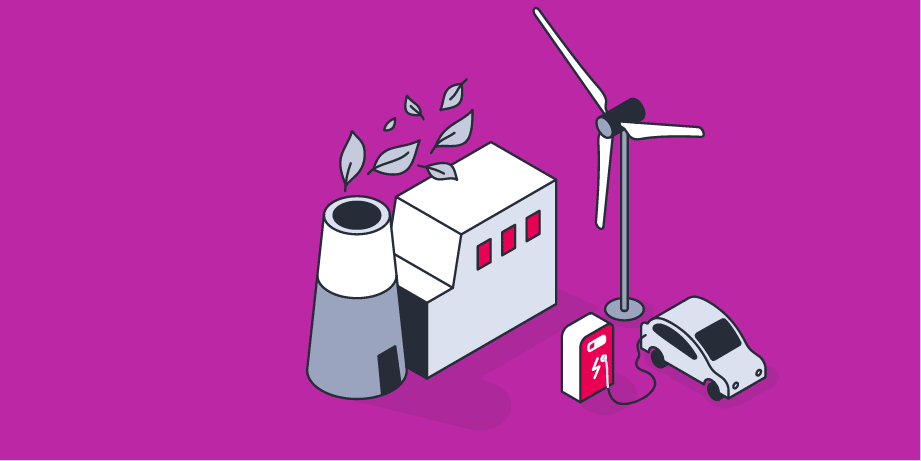All You Need to Know About Modern Slavery
Modern slavery occurs in all countries, and it is present at every stage of the supply chain.

Modern slavery can be broadly defined as the illegal exploitation of people for commercial or personal gain and the term covers a wide range of abuse such as forced labour, organ harvesting, domestic servitude and sexual or criminal exploitation. The International Labour Organization estimates that some 50 million people are in modern slavery at any given time, including 28 million in forced labour of which 86% are exploited in the private sector and are linked to the supply chains of major international businesses supplying goods and services. 22 million people are in forced marriage and there are an estimated 5.9 victims of modern slavery for every 1,000 people in the world.
Common forms of modern slavery
Every country is affected by modern slavery, and it can be found in many sectors such as agriculture, garment manufacturing, mining and construction. According to the Walk Free Foundation, the top-5 imported products currently most at risk of modern slavery in the United States are electronics, garments, fish, cocoa and timber.
In many parts of the world, the practice is being driven by ongoing conflict, political instability and forced displacement, while factors such as climate change and migration are making people increasingly vulnerable. It is not always easy to detect modern slavery given that it also occurs inside private homes or in settlements for displaced people. Common forms of modern slavery include the following:
Human trafficking: Adults and children are trapped or traded through the use of threats, violence, deception and similar tactics so that they can be exploited by others for commercial gain. For girls, that often results in sexual exploitation while women regularly become trapped in private homes where they are exploited and abused. Men are also victims of human trafficking and a common example is getting tricked into accepting a job with great risks that ultimately turns into forced labour with no avenue of escape. In 2018, the United Nations Office for Drugs and Crime estimated that around 46% of identified victims of human trafficking were women, 20% were men 19% were girls and 15% were boys. 57% of identified victims were trafficked by a business enterprise type of organised criminal group, 19% fell victim to governance-type of organised criminal groups, 14% were attributed to the opportunistic associations of traffickers while 11% occurred as a result of individual traffickers.
Forced labour: Nearly all slavery practices contain elements of forced labour and it is defined by the International Labour Organization Forced Labour Convention of 1930 as “all work or service which is exacted from any person under the threat of a penalty and for which the person has not offered himself or herself voluntarily”. While the practice affects millions of people, it is most often found in industries with little regulation such as agriculture, manufacturing, construction and prostitution. Governments are finally starting to tackle the problem through the introduction of mandatory requirements for companies to report on suppliers and subcontractors. Through such reporting duties, public monitoring and transparency are enhanced which helps to eliminate forced labour in supply chains. Examples of such legislation include the UK’s Modern Slavery Act, the French Corporate Duty of Vigilance Law and Germany’s Supply Chain Act. In the future, a new European Supply Chain Act will require EU companies to audit their suppliers along the entire global supply chain with the aim of ensuring compliance with human rights and environmental protection standards. These pieces of legislation will be explored in more detail later.
Criminal exploitation: This occurs when victims are forced to partake in crimes such as cannabis cultivation, shoplifting, drug smuggling, bike theft or pickpocketing against their will. This form of modern slavery is typically controlled by highly organised criminals and it is especially prevalent among the homeless and young men in particular. Vulnerable individuals are known to be approached by criminals in homeless accommodation to be recruited to carry out short-term work for a cash-in-hand payment. People from overseas also frequently become victims of criminal exploitation when they are approached with promises of money and steady work. More and more children are now being targeted by criminals to participate in this practice and victims are often maltreated.
Sexual exploitation and abuse: Victims are forced to perform non-consensual or abusive sexual acts that can include prostitution, pornography and escort work. Frequently, someone’s position of vulnerability is abused (such as when an individual depends on someone for survival, food or transport). Differential power or trust can also prove a factor, and this can be leveraged to obtain sexual favours by offering money or social, economic or political advantages.
Debt bondage: Also known as debt slavery, bonded labour or peonage, this occurs when someone is forced to pay off a debt through work. While it is an old practice, in existence for hundreds of years, it remains one of the most common forms of enslavement today. Along with the duration of the arrangement, the services required to repay the debt may be nebulous or completely undefined, allowing the person in control to demand those services indefinitely. They can also be passed on from generation to generation. Debt bondage is most common across South Asia and it is especially prevalent in Pakistan and India.
Forced/early marriage: Marriage involving children under 18 years of age is still widespread across the world and it violates children’s rights, placing them at high risk of exploitation and abuse. South Asia has the highest rates of child marriage globally and it is widespread in India, Bangladesh and Nepal. Child marriage can be referred to as a form of slavery if certain elements are present. These include the child not providing their free and informed consent to enter the marriage, if the child is subject to control and ownership within the marriage, and if the child cannot realistically leave or end the marriage. When girls manage to escape such marriages without support, they often become vulnerable to other forms of exploitation.
Organ harvesting: This form of modern slavery is increasing across the world, and it involves the illegal removal of internal organs for transplant without the donor’s consent. Victims may be manipulated into giving an organ or they may have it removed during an operation without their knowledge. In many cases, victims are trafficked or smuggled into another country after being falsely promised work. They can then be coerced into selling an organ to recoup the costs of travel and accommodation. There is a high likelihood of medical complications due to procedures not being followed while the “handler” often fails to pay the victim the promised monetary sum.
Traffickers involved in different forms of modern slavery are intelligent and avail of strategies to cover up their activities. Tactics for approaching victims are constantly evolving and it is important for the public to remain vigilant.
International prevalence
The 2018 Global Slavery Index (GSI) analysed the national-level prevalence of modern slavery for 167 countries based on the proportion of the population estimated to be in some form of modern slavery. The five countries with the highest prevalence are:
1. North Korea
2. Eritrea
3. Burundi
4. The Central African Republic
5. Afghanistan
The GSI remarks that the countries with the highest prevalence of modern slavery are connected to two major drivers – highly repressive regimes and conflict. These factors contribute to the dismantling of the rule of law and increase vulnerability across five dimensions – governance issues, lack of basic needs, inequality, disenfranchised groups and the effects of conflict.
It is important to mention that some countries, especially the worst offenders, have high rates of state-imposed forced labour. This is readily apparent in North Korea, Eritrea and Burundi where citizens are recruited by the government to partake in agriculture, construction or military service. In North Korea, it is estimated that one in 10 people are in modern slavery and that the bulk of the population is forced to work by the state.
While modern slavery is a serious problem in the developing world, its prevalence is higher than previously thought in high-income countries. For example, exploitation is rampant in the Gulf States, particularly in Qatar where preparations for the 2022 World Cup have relied on migrant workers employed under conditions amounting to forced labour, according to Amnesty International.
The GSI states that the prevalence of modern slavery is higher than thought in the United States, Australia, United Kingdom, France, Germany and the Netherlands. However, these countries are also taking the most action to respond to the problem. While those efforts are not in vain, they highlight critical gaps in protection in countries with traditionally strong laws and systems.
Modern slavery in supply chains
All companies have supply chains varying in scale and complexity depending on the size of the organisation. Unfortunately, modern slavery is rampant in global supply chains where it exists at all levels from collecting raw materials right up to the manufacturing process. In fact, most of the products we use every day like smartphones, shoes, clothes, coffee and flowers are produced by people who are trapped in modern slavery.
Outsourcing production to a country with cheaper labour may save companies costs but the supply chain becomes more complex, open to greater risks and oversight is far more difficult. For companies, best practice now involves thoroughly mapping the risks and understanding them before making decisions on how to address any problems. It is also important to ensure suppliers are aware of any potential problems and that they have the skills to mitigate them. Including a code of conduct in supplier contracts can prove helpful, as can collaboration with the regulatory authorities and industry peers.
Governments are finally taking action to tackle the problem of modern slavery in supply chains and that is going to have repercussions for companies. For example, under EU law, large companies are set to be held responsible for human rights abuses committed in their supply chains through new corporate social responsibility standards. The next section will look at national legislation in more detail.
Legislation combating modern slavery
Article 4 of the UN’s Universal Declaration of Human Rights states that “no one shall be held in slavery or servitude; slavery and the slave trade shall be prohibited in all their forms”. Unfortunately, many governments have failed to develop legislation protecting people from slavery, especially in the supply chain. The situation is slowly improving, however, and some countries have taken steps to introduce new measures.
United Kingdom
The UK has been a global leader in fighting modern slavery and it is notable for introducing world leading legislation – The Modern Slavery Act. It came into force on 29 October 2015 and it demands transparency in supply chains as well as outlining penalties for human trafficking. It also requires many businesses to disclose a “slavery and human trafficking statement”. While progressive, the Act has been criticised for being poor on victim protection and overly based on enforcement.
Germany
More recently, Germany’s Federal Cabinet approved legislation on corporate due diligence in supply chains through its new “Lieferkettensorgfaltspflichtengesetz”, or more simply, the Supply Chain Act. Published in the Federal Law Gazette on 22 July 2021, it compels German enterprises to respect human rights in global supply chains through new due diligence obligations. These include the establishment of a risk management system to minimise the risks of human rights violations. The Act also sets out the necessary preventative and remedial measures, makes complaint procedures mandatory and requires regular reports.
France
Similarly, France has the “Loi de vigiliance” (its own Supply Chain Act) which obliges companies to develop, implement and publish a due diligence plan enabling them to prevent serious human rights violations. In Europe, the different national frameworks are set to be brought to a universal standard through new legislation at EU level.
European Union
On February 23, 2022, the European Commission presented the EU Supply Chain Law – its proposal for a law on corporate sustainability obligations. This is set to oblige businesses operating in the EU to comply with the entire value chain and it goes far beyond existing legislation at national level. Companies will have to audit their suppliers along the entire global supply chain, including all direct and indirect business relationships, with the aim of complying with applicable human rights and environmental protection standards. Experts expect the law to be debated intensively in the European Parliament before it is possibly passed with new standards sometime in 2023.
North America
In North America, the United-States-Mexico-Canada Agreement (USMCA) prohibits the import of goods produced in whole or in part by forced or compulsory labour. The US has implemented the US Trafficking Victims Protection Act of 2000 to clamp down on the trafficking of persons. There is also a patchwork of legislation at state level targeting other forms of modern slavery such as the California Transparency in Supply Chains Act which aims to ensure large retailers and companies provide customers with information about their efforts to eradicate wrongdoing in their supply chains so that they can make informed decisions. In Canada, draft legislation against modern slavery is currently before the Senate which is seeking to introduce measures such as annual reporting obligations and hefty fines for organisations failing to comply with statutory requirements.
What companies need to watch out for
An estimated 80% of global trade passes through supply chains and companies have a responsibility to ensure no slavery has been used in the production of the goods they sell, whether it occurs in their own factory or further down the supply chain. Effective supply chain management and comprehensive monitoring to ensure high human rights standards are becoming more important than ever given the emergence of laws that are holding companies accountable for violations. Apart from the legal, financial and human repercussions of the presence of modern slavery in a company’s supply chain, it can also result in negative media coverage and devastating reputational damage.
That means that transparency should be maintained across business operations wherever possible to ensure there are no human rights abuses or benefits from modern slavery. In cases of public procurement in particular, it is important to guarantee that public funds are not inadvertently supporting any forms of modern slavery. Companies are also advised to ensure the ethical recruitment of migrant workers without charging them to secure work and carrying out practices such as withholding identification documents.
Implementing a strong ESG program goes a long way towards promoting human rights and preventing modern slavery while making an organisation more attractive for investors and customers alike. Such a strategy should include due diligence to assess, identify and mitigate the potential risks of forced labour throughout the supply chain. As mentioned earlier, dialogue with the regulatory authorities should be established and suppliers should be made aware of possible problems while being provided with the skills to mitigate them.
It is also prudent to implement grievance mechanisms such as a modern whistleblowing system which would allow individuals to report their concerns anonymously (if desired) and without fear of retaliation. Audits should also be conducted regularly to ensure compliance. More and more customers are now demanding ethically sourced products and given the deluge of regulations on the horizon, companies are advised to implement the above measures sooner rather than later.
EQS Group recently conducted a webinar examining modern slavery and supply chain nanagement compliance developments with a particular focus on the practical implications for whistleblowing. You can view it here:
Conclusion
Greed drives modern slavery and the ILO estimates that it generates $150 billion for traffickers annually. Activists have criticised governments for weak law enforcement for modern slavery offenses and called for the judicial process to be streamlined to improve the conviction rate. The growing calls for increased transparency in supply chains have proven successful, however, with a slew of promising legislation coming into force in many developed nations.
Naming and shaming has been another successful strategy whereby governments call out countries failing to take action against modern slavery. For example, the US State Department’s Annual Trafficking in Persons Report triggers restrictions on forms of financial assistance such as development aid. Studies have proven that such reports motivate countries to take decisive action against traffickers.
Finally, given that modern slavery might be happening in plain sight, the importance of vigilance cannot be emphasised enough. According to the Metropolitan Police in the UK, indicators of modern slavery include individuals appearing malnourished or injured as well as anxious behaviour and a reluctance to make eye contact. Workers using unsuitable equipment or clothing can also be a sign of exploitation, as can overcrowded or poorly maintained accommodation. A further sign can include an individual behaving like they are being instructed by someone else, being picked up/dropped off at the same place daily or not having access to money or identification.
If you want to learn more about modern slavery, this interesting BBC documentary approaches the problem from a different angle. Host Blindboy Boatclub uses humour, strong language and a team of investigative reporters to examine the prevalence of modern slavery in the UK today, with a strong focus on the tell-tale signs of offences occurring in plain sight.
If any of the typical signs are recognised, most countries have a modern slavery helpline where they can be reported. In the case of more serious crimes of threatening incidents, it is advisable to immediately contact the emergency services.

Key principles of establishing an effective ABC programme





